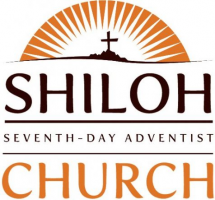To worship God according to conscience and to share Christ’s love are cherished freedoms not universally enjoyed. The government of God is based on freedom of choice. God chose to create humanity also with the power of choice. “See, I have set before thee this day life and good, and death and evil . . . blessing and cursing: therefore choose life, that both thou and thy seed may live” (Deuteronomy 30:15, 19).
Free exercise of religion is like a fragile flower; it must receive the most vigorous protection possible and the most gentle care to be found. Within it, freedom of conscience thrives or is throttled.
Revelation 13 points to a political power that will arise in the last days causing people to “worship” another religion-political power. Religion and politics are symbolized in Revelation 17 by an apostate church being sustained by the government. The persecuting power of this union of church and state is illustrated by the woman who becomes drunk with the blood of the saints.
What, then, are we to do about threats to religious freedom? Ellen White says, “It is our duty to do all in our power to avert the threatened danger. We should endeavor to disarm prejudice by placing ourselves in a proper light before the people. We should bring before them the real question at issue, thus interposing the most effectual protest against measures to restrict liberty of conscience” (Testimonies for the Church, Vol. 5, page 452).
Duties of the Religious Liberty Leader
The ministry to which a person is called when he or she becomes a religious liberty leader can best be described in the following ways:
1. Promote Liberty magazine. Your first responsibility as religious liberty leader is to help your pastor conduct the religious liberty campaign in your church. Set an example by your wholehearted support. Then encourage church members to subscribe to Liberty for themselves and give generously to send the magazine to community, state or province, and national officials and thought leaders.
2. Communication. Report good and bad news through church newsletters, the church bulletin, and in oral reports in the personal ministries time. Become the eyes and ears for your conference and union public affairs and religious liberty directors by bringing significant items to their attention.
3. Get acquainted with public officials. Know the state or provincial government leaders and national legislators from your area. Write to them when religious liberty issues arise. Let them know what your religious liberty concerns are in a respectful, dignified manner as befits the cause of Christ. When religious liberty issues arise, you may be asked to encourage church members to write letters to state, provincial, or national leaders, but consult with your union Publish Affairs and Religious Liberty (PARL) director before writing or contacting public officials in the name of the church.
4. Give recognition to civic leaders. When a civic official in your community takes a strong stand on upholding religious liberty, contact your union conference PARL director for assistance in recognizing the official by presenting an appropriate plaque or award at the church or in the official’s office.
5. Community relations. Become involved in the local community. Keep a current name and address file of city and county officials including council members. Get acquainted with your city and county public servants and be sure they receive Liberty magazine. Attend their meetings to become better acquainted with the problems in your community. Keep your pastor and conference PARL director informed about major developments in your community that could affect religious freedom. Help to organize local contacts when asked to do so by your pastor or conference PARL director.
6. Help church members. Watch for religious liberty problems among church members. Some members, especially new ones, are not aware that assistance is available to them as they face Sabbath employment problems or problems with labor unions.
LEARN MORE HERE
Responsibilities in the Local Church, by the Church Resources Consortium, North American Division of Seventh-day Adventist Church. Copyright © 1997, Revised 2002.

